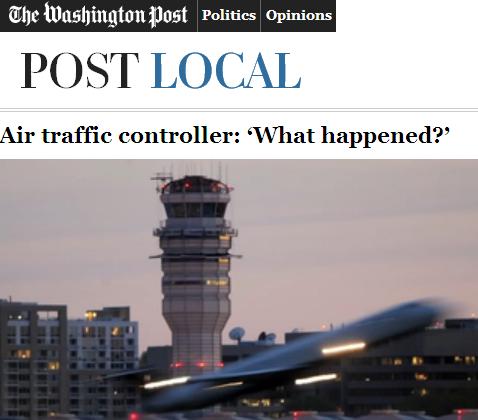On Tuesday around 2 PM, two US Airways commuter jets were traveling directly towards each other at a combined speed of 436 miles per hour. Within seconds the air traffic controller spotted the problem and directed the incoming plane to take evasive action to avoid a catastrophe.
The Washington Post has a great two page article on the entire story. Check out this excerpt on the moments before the narrow miss.
The inbound plane and the first of the outbound planes were closing the 1.4 miles between them at a combined speed of 436 mph, a rate that meant they were about 12 seconds apart when the tower controller recognized her mistake.
“Are you with me?†the tower controller asked the inbound pilot, checking to see whether he was tuned to her radio frequency. When the pilot acknowledged her, she ordered him to make an abrupt turn to the south to avoid the other two planes.
“We were cleared [for landing] at the river there,†the pilot said after breaking off the approach northwest of the airport. “What happened?â€

For those of us who travel this is a worst case scenario. I’ve been in a few aborted landings, but nothing this close……..I think.
Is there a problem with that airport?
When I read this I was immediately reminded of the March 2011 incident when and air traffic controller fell asleep directing traffic into Reagan.
Luckily all 192 passengers and crew on board the three flights operated by US Airways arrived to their destinations safely.
Follow us on Twitter || Like us on Facebook || Sign Up For Email || Tips & Tricks Page


As scary as that is, the TCAS system installed on all large commercial aircraft (30+ passengers) would have issued a resolution advisory (RA) to each of the pilots to pull up or descend immediately. One would pull up, the other would descend. The TCAS systems on each aircraft are communicating when they’re in close proximity to one another.
I think a disaster would have been avoided even with no ATC intervention, but these types of situations should obviously be avoided in the first place.
Being separated by 800 feet vertically and 3.5 miles doesn’t sound that bad. In the enroute environment, they need to be separated by 5 miles or 1,000 feet. However, aircraft are indicated to be level if they are within 200 feet of their assigned altitude. Two aircraft head on, but assigned 35,000 ft and 36,000 ft can actually be at 35,200 ft and 35,800 ft …..600 ft apart and 0 miles lateral. That’s okay!
I’m not sure when, but tcas doesn’t give resolution advisories below a certain altitude. So I’m not sure if it would have in this Reagan National story.